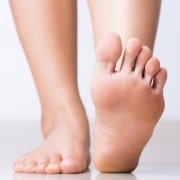Modern Innovations for the Treatment of Common Podiatric Ailments
Every year, numerous people make their way to a podiatrist for help with common foot-related injuries and illnesses. While traditional medicine still has its general place in podiatric care, many of the best practitioners have taken advantage of the latest forms of treatment. At our Austin podiatrist office, we are always implementing new ways to help patients have healthy feet. Here is a look at some of the modern innovations in podiatric care you may experience when you come in for a visit.
1. Laser Treatment for Toenail Fungus and More
For many years, patients had to rely on minimally effective treatments to try to eradicate issues with toenail fungus. However, modern technology has afforded a new solution for people with this aggravating and unsightly issue: laser treatment. Laser treatment for toenail fungus targets the fungi without causing damage to the full toenail or the surrounding tissue. And, this modern treatment has been shown to be more effective than a lot of topical ointments and other traditional remedies.
2. Stem Cell Treatment for Soft Tissue Injuries
Soft tissue injuries can be some of the slowest-healing injuries. For example, if you have a torn Achilles tendon, the tendon itself is slow to mend because it is dense and heavy, so it takes the body a long time to rebuild that tissue without some level of support. Stem cell treatment gives your body the growth-supporting cells that can help that tissue regenerate quicker so you can get back to normal faster.
3. PRP (Platelet-Rich Plasma) Treatment for Foot Fractures
PRP has been used in numerous types of medical treatment, including orthopedic care. Platelet-rich plasma is essentially your own bodily blood plasma product in concentrated form. Blood is taken from you, put through a scientific process to condense the valuable platelets, and then that platelet-rich plasma is injected at the injury site. The PRP treatment may help encourage the rapid healing of the fracture in your foot.
Let’s Talk About Foot Care in Austin, TX
The ways in which innovative medicine has seeped into podiatric care are nothing short of amazing. If you have issues with your feet, reach out to us at the office of Dr. Jeffery LaMour, DPM, PA in Austin, TX. We work hard to provide all of the latest treatment options for our patient’s feet.






